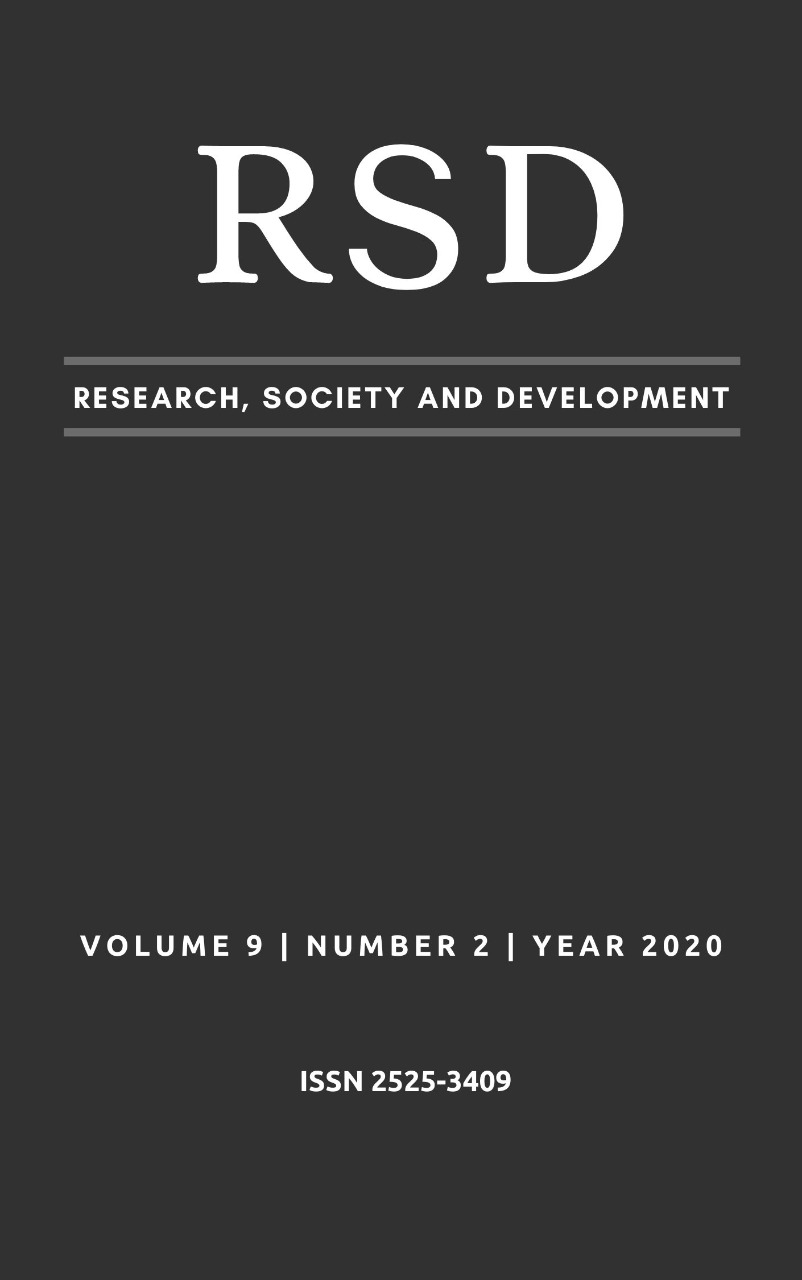Vulnerabilidades em redes Wi-Fi de instituições de ensino superior: um estudo de múltiplos casos
DOI:
https://doi.org/10.33448/rsd-v9i2.1979Palavras-chave:
Wi-Fi, Pentest, Análise de Vulnerabilidades.Resumo
Junto às redes Wi-Fi, em alta na atual era da informação, surgiram também novos riscos aos usuários e às instituições de ensino superior que proveem esse tipo de rede. O objetivo deste trabalho foi analisar, por meio de um Teste de Penetração (Pentest), as vulnerabilidades e ameaças presentes nas redes Wi-Fi de Instituições de Ensino Superior (IES) de Belo Horizonte e de cidades do interior de Minas Gerais próximas da capital. A coleta de dados realizou-se por meio de teste experimental – Pentesting in loco - em redes Wireless Local Area Network (WLAN) das 12 Instituições de Ensino Superior participantes. Os resultados mostraram que a infraestrutura das redes Wi-Fi das IES é muito diversificada e que uma porcentagem significativa dessas WLAN se encontra vulnerável e pode ser ameaçada por usuários maliciosos.
Referências
Associação Brasileira de normas técnicas. (2013). ABNT ISO/IEC Guia73:2013. Gestão de Riscos. Vocabulário. Recomendações para uso em normas. Associação Brasileira de normas técnicas. Rio de Janeiro.
Allen, L., Heriyanto, T. & Ali, S. (2014). Kali Linux: assuring security by penetration testing. [s v.l: s.n.]. Packt Publishing Ltd, 7 de abr. de 2014 - 450 p.
Bacudio, A. G. et al. (2011). An Overview of Penetration Testing. International Journal of Network Security & Its Applications, 3(6): 19–38.
Beggs, R. W. (2014). Mastering Kali Linux for advanced penetration testing. Fist ed. Birmingham: [s.e.].
Botnet, C. (2012). Port scanning /0 using insecure embedded devices. Internet Census. Disponível em: <http://census2012.sourceforge.net/paper.html>. Acesso em: 01 nov. 2019.
Caçador, D. M. (2014). Segurança e Mobilidade em Redes IEEE 802.11: Modelo de suporte à decisão na escolha de arquitecturas e tecnologias de redes sem fios. [s.l.] Universidade Católica Portuguesa.
Kang, Y. et al. (2015). Comparative Study of Penetration Test Methods. Advanced Science and Technology Letters, 87(1): 34–37.
Lashkari, A. H. et al. (2009). A Survey on Wireless Security protocols (WEP , WPA and WPA2 / 802 . 11i). Computer Science and Information Technology, 2009. ICCSIT 2009. 2nd IEEE International Conference on, n. 1 v 3, p. 48–52.
Ludke, M.; Andre, M. E. D. A. Pesquisa em educação: uma abordagem qualitativa. 2.ed. São Paulo: EPU, 2013.
Pereira, A.S. et al. (2018). Metodologia da pesquisa científica. [e-book]. Santa Maria. Ed. UAB/NTE/UFSM. Disponível em: https://repositorio.ufsm.br/bitstream/handle/1/15824/Lic_Computacao_Metodologia-Pesquisa-Cientifica.pdf?sequence=1. Acesso em: 01 nov. 2019.
Philfer, Lisa. (2009). A list of wireless network attacks. Disponível em: <http://searchsecurity.techtarget.com/feature> Acesso em: 01 de nov. 2019.
Ramachandran, V. (2011) BackTrack 5 wireless penetration testing. 1st ed. Birmingham: [s.e.].
Ramachandran, V.; Buchana, C. (2015). Kali linux wireless penetration testing beginner ’ s guide. 2nd ed. Birmingham: [s.e.].
Rufino, Nelson Murilo de O. (2014). Segurança em redes sem fio - Aprenda a proteger suas informações em ambientes Wi-Fi e Bluetooth. 4. ed. São Paulo: Pearson.
Scarfone, K.; Orebaugh, A. (2008). Technical Guide to Information Security Testing and Assessment Recommendations of the National Institute of Standards and Technology. Nist Special Publication, v. 800, p. 1–80.
Shravan, K.; Neha, B.; Pawan, B. (2014). Penetration testing: A Review. Compusoft, Faridabad v. 3, n. 4, p. 752–7.
Sobh, S. T. (2013). Wi-Fi Networks Security and Accessing Control. International Journal of Computer Network and Information Security, v. 5, n. 7, p. 9–20.
Waliullah, M.; Gan, D. (2014) Wireless LAN Security Threats & Vulnerabilities: International Journal of Advanced Computer Science and Applications, v. 5, n. 1, p. 176–183.
Weidman, Georgia. (2014) Teste de invasão – Uma introdução prática ao hacking. São Paulo: Novatec.
Welch, D.; Lathrop, S. (2003). Wireless security threat taxonomy. Information Assurance Workshop, 2003. IEEE Systems, Man and Cybernetics Society, June, p. 76–83.
Downloads
Publicado
Edição
Seção
Licença
Autores que publicam nesta revista concordam com os seguintes termos:
1) Autores mantém os direitos autorais e concedem à revista o direito de primeira publicação, com o trabalho simultaneamente licenciado sob a Licença Creative Commons Attribution que permite o compartilhamento do trabalho com reconhecimento da autoria e publicação inicial nesta revista.
2) Autores têm autorização para assumir contratos adicionais separadamente, para distribuição não-exclusiva da versão do trabalho publicada nesta revista (ex.: publicar em repositório institucional ou como capítulo de livro), com reconhecimento de autoria e publicação inicial nesta revista.
3) Autores têm permissão e são estimulados a publicar e distribuir seu trabalho online (ex.: em repositórios institucionais ou na sua página pessoal) a qualquer ponto antes ou durante o processo editorial, já que isso pode gerar alterações produtivas, bem como aumentar o impacto e a citação do trabalho publicado.


